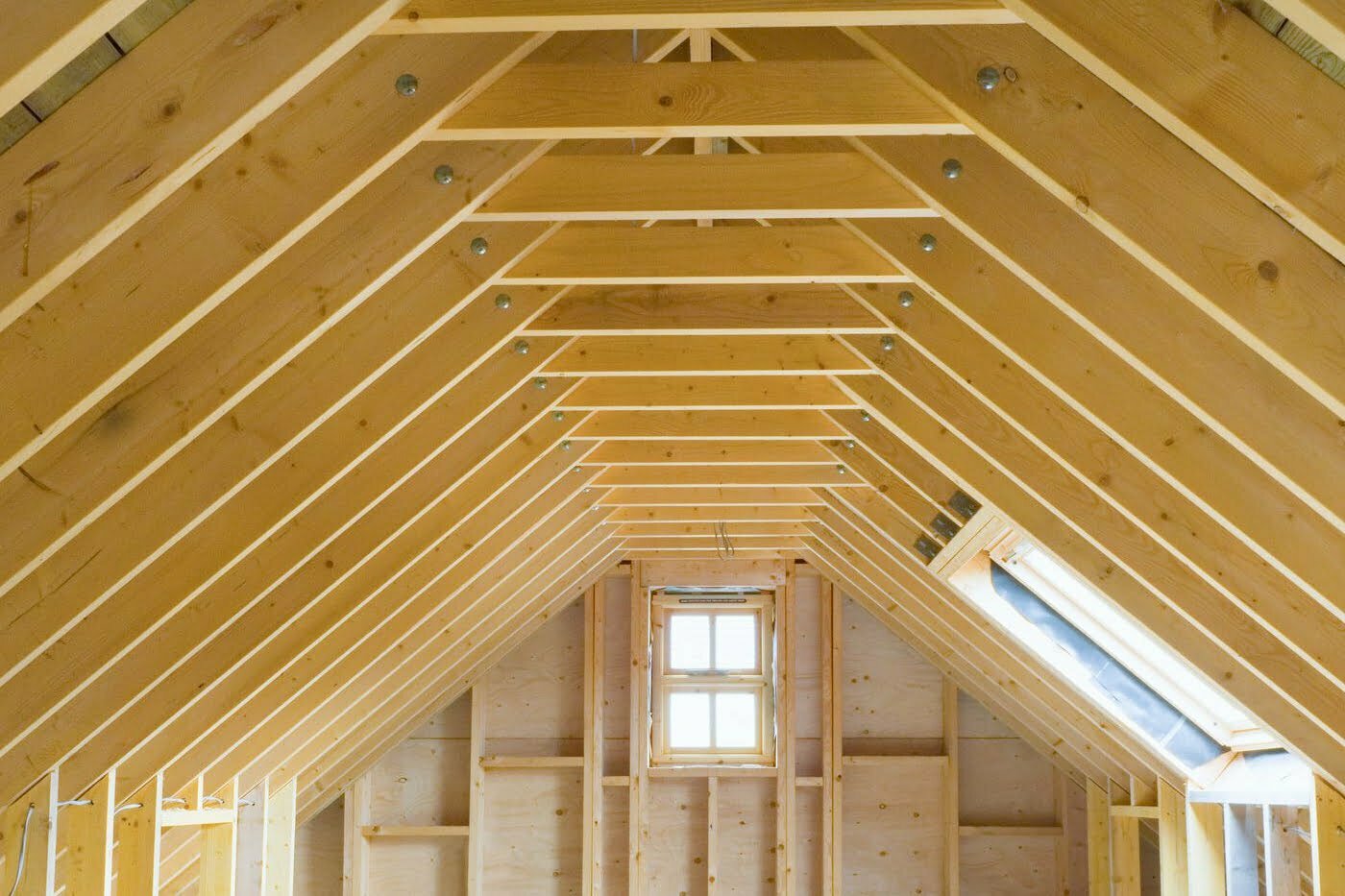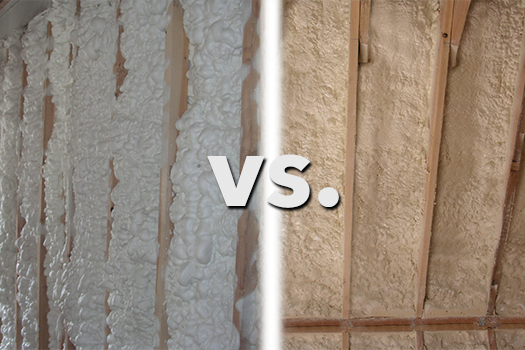Spray foam is a commonly used type of insulation that maintains a comfortable temperature within homes. However, proper attic ventilation plays an important role in this process that shouldn’t be forgotten. If you’re interested in getting new insulation for your attic, you might wonder, “Do you need attic ventilation with spray foam insulation?” Let’s look closer at the relationship between spray foam insulation and attic ventilation and how the two interact.
Understanding Basic Principles of Attic Ventilation
Attic ventilation is a fundamental part of a well-functioning home. The type and amount of ventilation needed depend on where insulation foam is applied in the attic. Most home inspection teams will tell you that proper attic ventilation and insulation go a long way in ensuring your home is comfortable, safe, and energy-efficient.
Proper Attic Ventilation
If spray foam insulation is applied to the attic floor, ventilation above the foam is necessary to allow moisture to escape. Roof vents or a gap between the foam and roof deck provides this airflow. Without ventilation, moisture can accumulate and cause mold, mildew, or damage to the roof.
If spray foam is instead applied to the attic ceiling, ventilation may not be needed. An exception is with wood, tile, slate, or some asphalt shingle roofs that require an air gap for their warranties. In these cases, a 1-inch gap between the insulation and roof materials provides essential airflow and ventilation.
How Attic Ventilation Works
Attic ventilation removes hot, stagnant air, preventing moisture issues and cooling the home. Proper ventilation paired with strategic spray foam insulation placement provides superior comfort, efficiency, and roof protection compared to an unventilated attic. The key is understanding how to integrate insulation with adequate air circulation.
An Overview Of Spray Foam Insulation
Professionally licensed contractors often recommend spray foam insulation, as it is a type of insulation material that expands and hardens when sprayed onto surfaces. This two-part liquid chemical compound forms a solid plastic-like material that seamlessly adheres to surfaces. With its impressive ability to minimize air leakage and prevent thermal bridging, spray foam insulation is an attractive solution for homeowners dealing with high energy bills caused by inadequate insulation.
Insulating with spray foam has several advantages. Besides significantly enhancing your home’s energy efficiency, it can also prevent mold growth, reduce noise, and improve indoor air quality when paired with air purifiers. So, while it may initially seem like a big investment, spray foam can offer long-term savings on heating and energy bills.
The Relationship Between Spray Foam Insulation and Attic Ventilation
The dynamics of spray foam insulation and attic ventilation encapsulate some of the fundamental aspects of home efficiency and overall indoor air quality. A professionally licensed contractor can help you understand the particular relationship between spray foam insulation and attic ventilation in your home.
The Need for Attic Ventilation When Using Spray Foam Insulation
The main question homeowners ask is, “Do you need attic ventilation with spray foam insulation?” Ventilation systems, particularly roof channels or ridge vents, allow hot air to escape from the attic space. This circulation prevents the buildup of excessive heat and prevents mold and mildew growth caused by moisture. The answer depends on the type of foam used and the installation method.
Open-Cell Spray Foam Insulation
Open-cell spray foam contains tiny pores that allow water vapor to pass through while still insulating effectively. When installed in attics, open-cell spray foam insulation offers three major performance advantages.
First, the foam is permeable, allowing water vapor to pass through rather than trapping it. This breathability prevents condensation on roof decking that could otherwise cause mold, rotting rafters, or other moisture damage.
Second, open-cell foam remains reasonably flexible after sprayed, expanding, and contracting with natural temperature fluctuations. This flexibility prevents the foam from damaging roof decking over time. More rigid insulations, by comparison, might stress the roof.
Finally, open-cell foam clearly indicates any developing roof leaks. When water leaks through, the foam will visually discolor and deform, signaling that homeowners need to address the issue before further harm occurs quickly. The moisture control, flexibility, and leak detection abilities make open-cells the top choice for insulating attic spaces.
Despite these advantages, additional attic ventilation with open-cell foam is still recommended. The ventilation serves as a redundant system regulating attic humidity and preventing problems, working in conjunction with the natural moisture permeability of the foam.
Closed-Cell Spray Foam Insulation
Closed-cell spray foam has a more rigid structure with smaller cells that are impermeable to moisture. In attics, closed-cell foam would need supplemental ventilation to control humidity. However, with proper installation, closed-cell foam can fully encapsulate an attic to create an air-sealed, conditioned space just like any other room.
In a conditioned attic, the closed-cell foam seals and insulates the space while the home’s HVAC system handles air circulation and humidity control. This eliminates the need for separate attic ventilation. Careful execution is vital, though – the attic air must communicate with the rest of the home’s conditioning system like a standard room.
In summary, open-cell foam suits ventilated attic assemblies, while closed-cell foam allows for properly sealed, conditioned attics without separate ventilation. Paying attention to the spray foam type and installation method ensures peak efficiency and moisture control in your attic space.
Tips for Ventilating an Attic with Spray Foam Insulation
Insulation professionals recommend a combination of a well-insulated attic space and proper ventilation. An ideally placed ventilation system would allow hot air to escape, thus aiding in environmental protection and maintaining a balanced indoor air climate.
When it comes to insulating attic floors, spraying open-cell or closed-cell foam directly onto the floor is a practical approach. The foam can seal any cracks and gaps while providing an insulation rating as high as R-30. Attic floor insulation helps prevent conditioned air in the rooms below from escaping into the attic. This can lower heating and cooling costs.
Try to position your ventilation system around roof ridge vents and gable-end vents. A passive ventilation system, like a roof ventilation system, can work hand-in-hand with the density spray foam to keep the attic cool while reducing energy bills. The attic ventilation lets out any moisture that permeates through the foam. Also, ensure your ventilation is aided by high-quality air purifiers to clean up any noxious odor linked with insulation materials.
Potential Solutions and Alternatives
If you’re looking for ventilation options for your attic, you have a few solutions and alternatives available.
Optimal Placement of Ventilation Ducts in Spray Foam Insulated Attics
Experts suggest placing ventilation ducts near the ridge vents or the roof deck. This placement ensures a vented attic system leading to a better-ventilated roof deck and attic space, removing hot air and bringing in the cool air from the outside.
The Role of HVAC Systems in Ventilation
HVAC systems can also play an important role in improving the ventilation of attics, especially those with spray foam insulation. This follows the same logic as the placement of ventilation ducts, as stated above. Ideally, HVAC installation should happen alongside spray foam insulation to ensure a compact and efficient unit.
Quality Spray Foam Installation from Cincinnati RetroFoam
When it comes to upgrading your attic with spray foam insulation, Cincinnati RetroFoam is the perfect choice for professional installation. Our team of certified technicians carefully assesses your attic space and uses specialized equipment to apply spray foam insulation according to precise specifications. We always observe industry best practices for preparation, ventilation, safety measures, and insulation thickness, ensuring that you get maximum energy savings and comfort throughout your space. Trust Cincinnati RetroFoam for top-notch results in your attic spray foam insulation project.
FAQs
Do I need to vent a roof with spray foam insulation?
Properly installed spray foam insulation creates an air seal and provides thermal performance without the need for venting in most cases. By eliminating air leaks, spray foam prevents moisture buildup and helps maintain consistent temperatures. Building codes generally require ventilation with fiberglass batts or loose-fill insulation to allow moisture to escape. But with spray foam, the insulation itself blocks moisture and forms an effective air barrier.
Does spray foam insulation remove the need for ventilation?
While it provides a solid air seal, spray foam insulation does not completely remove the need for ventilation in a home. Spray foam thoroughly fills cracks and gaps, but some ventilation is still required to allow for fresh air circulation and moisture control. It’s recommended to still have ventilation systems like fans, range hoods, and intake/exhaust vents, even with spray foam insulation.
How do you ventilate after spray foam installation?
Proper ventilation is important after spray foam installation to allow any fumes to dissipate. Open windows and use fans to circulate air for at least 24 hours after the foam is installed. Ventilating too soon could affect curing, so wait until the foam has fully expanded and hardened before ventilating. Run any fans on the exterior side of the house to direct fumes outwards. Keep pets and kids away during the ventilating period. Wear a mask if entering the space before the fumes have cleared. Ventilating correctly ensures the space will be safe to occupy once the spray foam has cured.


